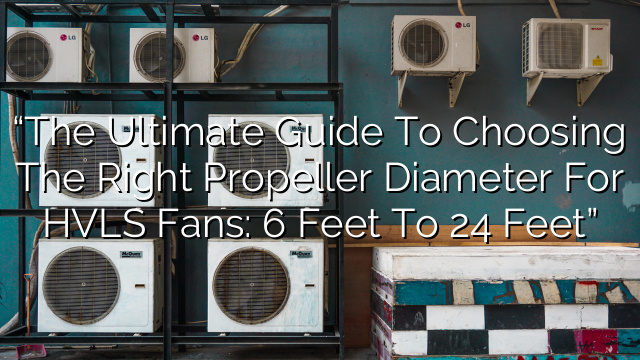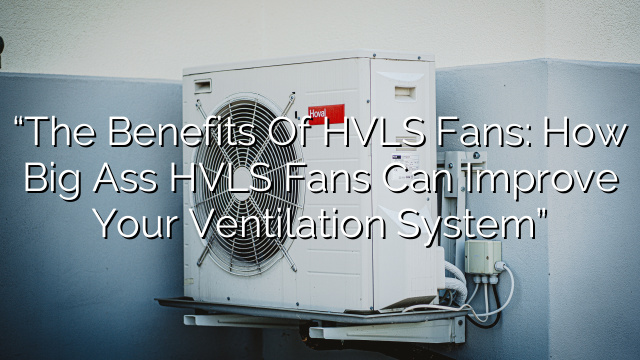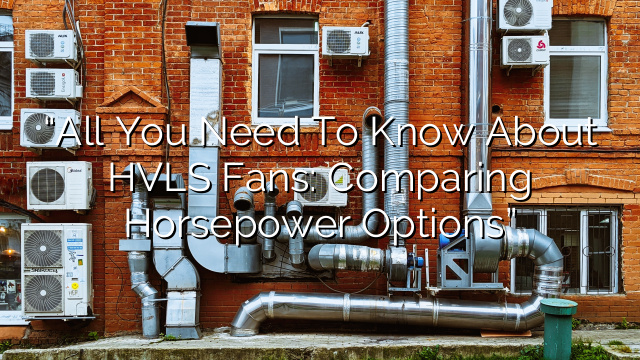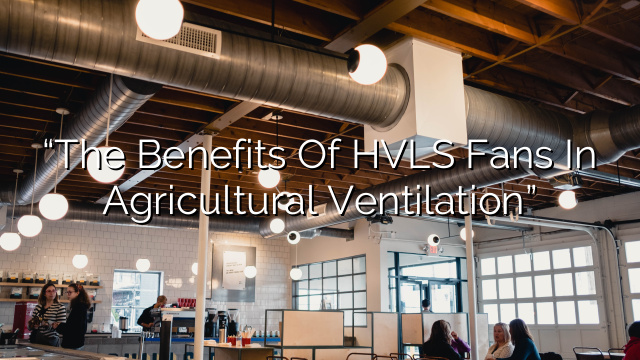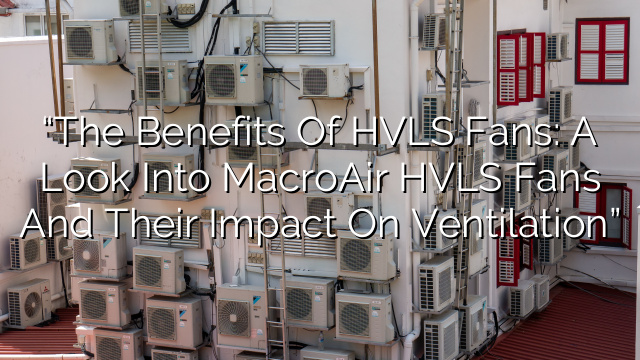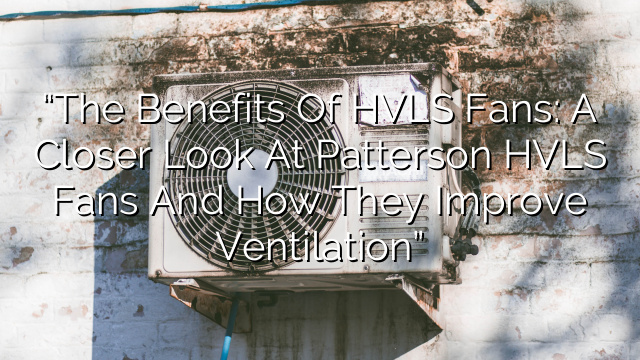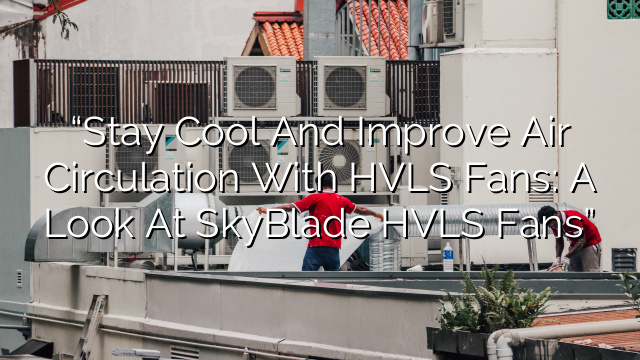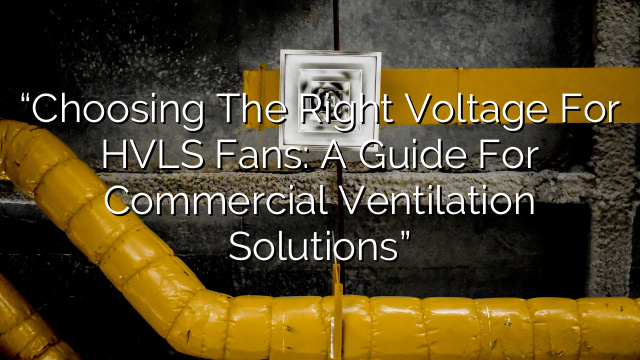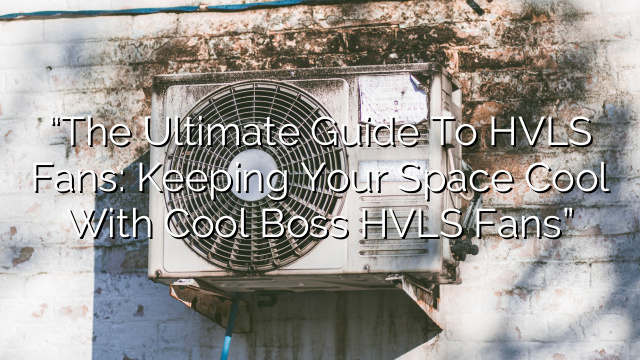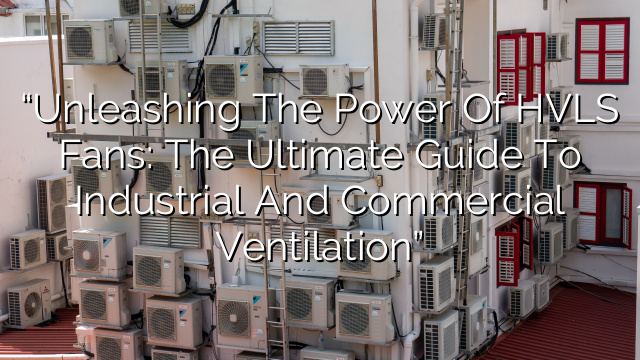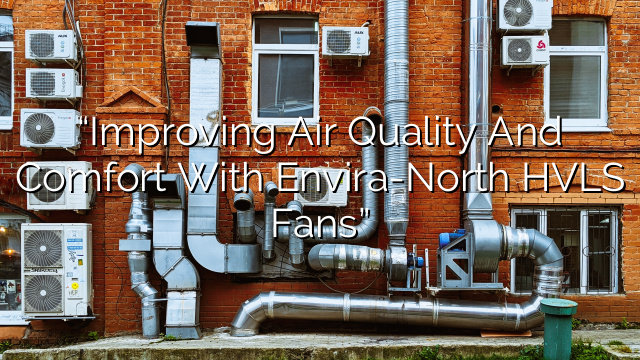Are you considering installing HVLS (High Volume Low Speed) fans in your space, but unsure about the right propeller diameter to choose? Look no further! In this comprehensive guide, we will take you through everything you need to know about selecting the ideal propeller diameter for your HVLS fans. Whether it’s a small space or a large industrial warehouse, we’ve got you covered!
What are HVLS Fans?
Before we dive into the specifics of propeller diameter, let’s understand what HVLS fans are and how they work. HVLS fans are specially designed to provide efficient air movement in large spaces at low speeds. They are perfect for commercial and industrial applications where proper ventilation and air circulation are essential.
HVLS fans work by moving a large volume of air at a low velocity, which helps in creating a cooling effect in the summer and distributing warm air during winters. These fans are known for their energy efficiency, as they consume significantly less power than traditional fans while providing superior air circulation.
Importance of Choosing the Right Propeller Diameter
The propeller diameter of an HVLS fan plays a crucial role in determining the effectiveness and performance of the fan. Choosing the right diameter ensures that the fan moves an adequate amount of air, creating the desired airflow in your space.
A fan with a smaller propeller diameter may not be able to generate sufficient airflow in large spaces, leading to inadequate ventilation. On the other hand, a fan with a larger propeller diameter may unnecessarily consume more power and create excessive wind speeds, which can be uncomfortable in smaller spaces.
To make an informed decision, it is essential to consider factors such as the size of your space, ceiling height, and the intended purpose of the HVLS fan. Let’s explore the propeller diameter options available for HVLS fans:
Propeller Diameter Options: 6 Feet to 24 Feet
When it comes to propeller diameter, HVLS fans are available in various sizes to accommodate different space requirements. Here’s a breakdown of the propeller diameter options and their recommended applications:
- 6 Feet: Ideal for small spaces like garages, workshops, and retail stores. These fans provide adequate airflow without causing excessive wind speeds.
- 7 Feet: Suitable for small to medium-sized spaces such as classrooms, restaurants, and office spaces. They provide excellent air circulation without overwhelming the area.
- 8 Feet: Perfect for medium-sized spaces including warehouses, gymnasiums, and manufacturing facilities. These fans offer a balanced airflow for improved ventilation.
- 9 Feet: Recommended for larger spaces like airports, shopping malls, and convention centers. They provide robust airflow while covering a significant area.
- 10 Feet: Suitable for industrial facilities, large production areas, and sports arenas. These fans are designed to handle high ceilings and deliver efficient air movement.
- 12 Feet: Ideal for expansive spaces such as aircraft hangars, stadiums, and large manufacturing plants. They offer powerful airflow and are capable of covering an extensive area.
- 14 Feet: Recommended for extremely large spaces including distribution centers, warehouses, and large indoor stadiums. These fans offer unmatched air movement and ventilation.
- 16 Feet: Perfect for extra-large spaces like aircraft maintenance facilities, shipping ports, and enormous industrial warehouses. They can handle high ceilings and deliver exceptional air circulation.
- 18 Feet: Suitable for massive spaces including exhibition halls, mega shopping centers, and industrial complexes. These fans generate a substantial amount of airflow, ensuring proper ventilation.
- 20 Feet: Recommended for gigantic spaces such as manufacturing plants, large event venues, and hangars. They are designed to create an optimized airflow pattern, promoting maximum air circulation.
- 24 Feet: Ideal for the largest of spaces, including arenas, airports, and vast industrial complexes. These fans provide unmatched air movement and ventilation, ensuring proper climate control.
Factors to Consider When Choosing Propeller Diameter
While the size of your space is an essential factor in determining the propeller diameter, several other considerations can help you make a well-informed decision:
- Ceiling Height: Higher ceilings may require fans with larger propeller diameters to effectively move air downwards and create the desired air circulation.
- Desired Airflow: If you require powerful airflow due to extreme heat or specific ventilation needs, opting for a larger propeller diameter will ensure maximum air movement. However, be mindful of excessive wind speeds in smaller spaces.
- Installation Location: Consider the available installation space and any obstructions that may affect air movement. Ensure there is sufficient clearance for the HVLS fan to function optimally.
- Budget and Energy Efficiency: Larger propeller diameters may have a higher upfront cost and consume more power. Consider your budget and long-term energy costs while selecting the appropriate size.
FAQs
1. How do HVLS fans compare to traditional fans? HVLS fans are designed to move a large volume of air at low speeds, making them more energy-efficient compared to traditional fans. They provide superior air circulation in large spaces and help maintain a comfortable environment.
2. Can HVLS fans be used in outdoor spaces? Yes, HVLS fans can be used in outdoor spaces with proper weatherproofing. They are commonly installed in outdoor seating areas, event venues, and covered outdoor stadiums to provide cooling and air movement.
3. Can I install multiple HVLS fans in one space? Yes, multiple HVLS fans can be installed in larger spaces to ensure optimal air movement and circulation. However, it is essential to consider the propeller diameter, placement, and spacing between the fans to avoid air turbulence and obstructions.
4. Can I adjust the speed of HVLS fans? Yes, HVLS fans usually come with variable speed controls, allowing you to adjust the fan speed according to your requirements. This feature enhances energy efficiency and allows for customized airflow.
5. Are HVLS fans noisy? No, HVLS fans are specifically designed to operate quietly. Their large propeller diameters and low rotational speeds result in minimal noise levels, making them suitable for noise-sensitive environments such as offices and classrooms.
Conclusion
Choosing the right propeller diameter for your HVLS fans is crucial to ensuring efficient air movement and ventilation in your space. Consider factors such as the size of your space, ceiling height, and desired airflow before making a decision. With the wide range of propeller diameter options available, you can find the perfect fit for any commercial or industrial application. Install HVLS fans with the right propeller diameter, and enjoy the benefits of improved air circulation and a comfortable working environment.

